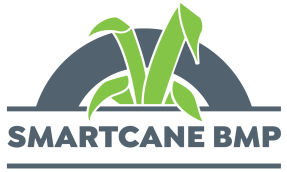A third generation Mackay cane grower has become the first in Australia to receive accreditation in the new industry best practices farm program, Smartcane BMP.
Michael Deguara received his certificate of accreditation for the Smartcane BMP Soil Health and Nutrition module, a critical module in the eventual roll-back of regulation for the sugarcane industry and one which covers of on a key issue for the farming community – nitrogen use efficiency. It’s one of seven that makes up the program.
CANEGROWERS Chairman Paul Schembri says that the Smartcane program is shaping up to be a huge success for the industry with over 300 growers, accounting for more than 70,000 hectares, signed up to the program within the first few months of its launch.
Mr Deguara says while it wasn’t as easy as he had expected, he believes the rigour in the system will be the thing that sells growers, industry, government and the community on Smartcane BMP being the system they can hang their hat on.
“Going through the module made us think about everything we do on the farm. That’s the thing about best practice – there are always new ways and better technology around the corner.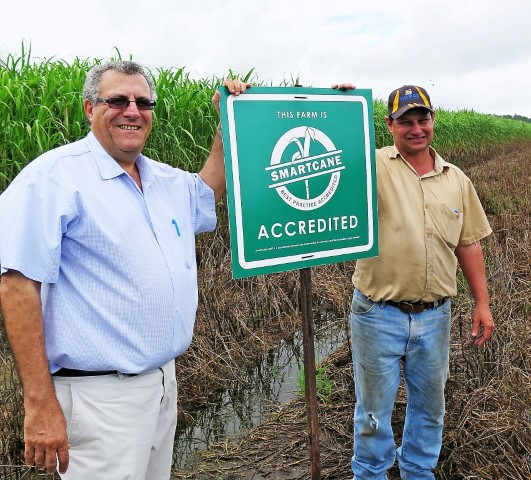
“I think growers will appreciate being able to know for certain they are doing the right thing – and as we go along, this Smartcane system is going to help us keep thinking about any new practices and technologies we could or should be using.
“Working on several of the seven modules as part of Smartcane BMP has given me the confidence that Smartcane BMP will definitely provide a watertight assurance to the community that the Australian sugarcane industry is leading the world in environmentally sustainable farming.”
Paul Schembri says the early success of the program is a credit to the Queensland Government for taking a strong, proactive partnership approach with industry.
“We thank Premier Campbell Newman on his initiative of partnering with industry to develop a best practices system and Minister for Environment, Andrew Powell, and Minister for Agriculture, John McVeigh, for supporting the BMP approach to a place where we can now get growers from across the State through as many modules as we can and really show our communities that our cane farms deserve the reputations they have worldwide as being leading edge growers of sugarcane,” Paul says.
He says the government’s support will help growers shift from regulation to an industry-led system underpinned by profitability and strong land stewardship.
You can hear Michael talking about his experience going through the Smartcane BMP module on ABC Radio here http://www.abc.net.au/news/2014-03-27/best-practice-equals-sweet-success/5350022
Latest Posts
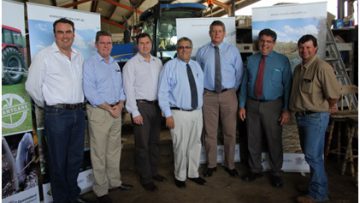
Industry unites at Smartcane BMP launch
It’s not often that you will see all the stakeholder groups across an industry unite in support of a program, but that’s exactly what happened when the new best practices system, Smartcane BMP, was launched at the end of last year.
Not only did two government Ministers share the stage at the launch, but CANEGROWERS and the Australian Cane Farmers Association teamed up to unveil what they describe as a critical program for the Australian sugarcane industry.
CANEGROWERS said it was important that the launch was held in one of State’s 14 major sugarcane growing hubs as the program is a grassroots one whose success hinges on grower participation. And attract grower interest it did, as around 50 local Mackay and Proserpine cane growers flocked to the event held on the Deguara cane farm at Farleigh, to learn about the next big stage in the cane industry’s future.
The official start of Smartcane BMP was marked by congratulatory speeches by Environment and Heritage Protection Minister Andrew Powell and Agriculture, Forestry and Fisheries Minister John McVeigh, who were quick to pat the industry on the back for its willingness and commitment to promote and adopt best management practices.
“By adopting Smartcane BMP, growers will reduce green tape, strengthen long-term farm productivity and help improve water quality for the Great Barrier Reef,” Minister Powell told the crowd.
It’s been described as a new era for sugarcane farming in Australia. Growers are being urged to sign up and work through a series of online modules, eventually leading to accreditation showing that they work to the highest standards on their farm.
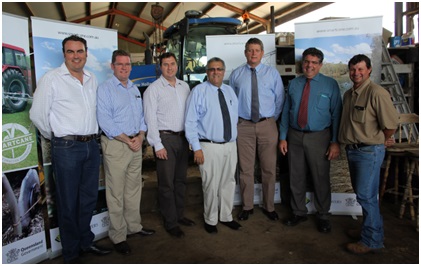
And as the number of cane farmers working through Smartcane BMP increases, the government has committed to winding back some of the regulations placed on the industry by the previous Labor state government.
Agriculture Minister John McVeigh said best management programs had already worked successfully in other industries, such as cotton and grain. He said it was now the sugar industry’s turn to take up that challenge.
CANEGROWERS Chairman Paul Schembri said growers should welcome the program with open arms because it was the much needed vehicle the sugarcane industry needed to show it can engage in self-management of its environmental affairs. “What’s more, it’s a better approach than regulation because it inspires people to get the best possible outcome,” he said.
“The key outcomes will be improved profitability and improved productivity – but let’s be under no illusion; one of the key objectives here is to demonstrate to the community that this industry has got the environmental wherewithal to convince everybody that we are an environmentally sustainable industry.”
Knowing farmers are looking after the land and their environs is something that the world is starting to care increasingly about and Mr Schembri says that by growers signing on and completing modules, the Australian industry would be able to prove its current reputation amongst its international peers as leading the world in sustainable cane farming. “This is an opportunity for us to tell our story and our story is an impressive one,” he says.
Local grower Michael Deguara, who hosted the event at his Farleigh property and CANEGROWERS Mackay Chairman Kevin Borg, both completed one of the seven Smartcane BMP modules before the launch. Michael Deguara admitted to the gathering that it was challenging. “By not being easy it will give it strength and credibility,” he said.
He and Kevin Borg publically joined the growing list of industry stakeholders who are urging growers to sign up.
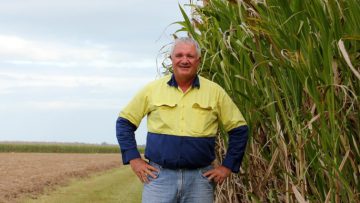
First farmer accredited in three key BMP modules
A spell of wet weather prompted Michael Pisano to become the first cane grower to be accredited in the three key Smartcane BMP modules.
The CANEGROWERS Herbert River Director and CANEGROWERS Policy Councillor was among the first farmers to register for the Smartcane BMP program. Now he’s the first to have been audited in the three key modules in the program (out of the seven that make up Smartcane BMP).
Michael didn’t have to change a thing about the way he farms; he just had to prove what he was doing.
“I’d done the initial workshop and then it sat there for about three months until we got some rainy weather and I decided to get stuck into it in the office,” Michael says. “We were already using the Best Management Practices on our farm. The biggest thing was coming to terms with all the recording that’s required and the evidence to show what we were doing.”
Michael admits he found the process but a bit tough. “But with the help of our local facilitator and others, we worked through it,” he says.
“I had to formalise my nutrient and weed management plans but now that it’s done I only have to update it each year. I think over 90% of the growers in this district could look through and see that their practices meet the requirements.”
Michael and Linda Pisano’s farm at Braemeadows, east of Ingham, has no irrigation and produces 6,500-7,000 tonne on average from around 90 hectares.
All machinery is on GPS with auto-steer and matched to the row spacings. Along with most growers in the Herbert River district, Michael made the switch to green cane cutting in the 1980s and has never looked back.
“It’s probably the biggest change in farming that I’ve seen that’s been of real benefit to us. If it’s too wet to harvest you can just leave it, the contractor can go somewhere else and comeback later.
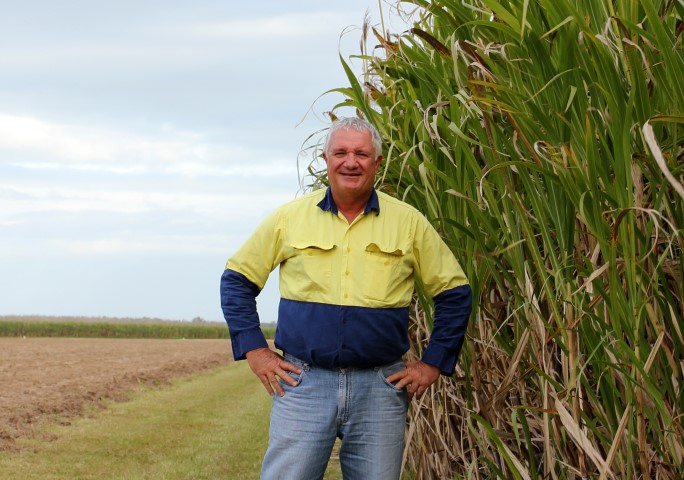
“Trash blanketing keeps the moisture in during the dry parts of the year and in the wet season the soil doesn’t move. It also keeps grasses down – we hardly ever see narrow leaf weeds anymore. It’s just the broadleaf ones which sometimes get through.”
Michael says the trash and using a high-rise sprayer that helps him target weeds have meant his chemical usage has dropped dramatically over the past decade.
An Australian Government Reef Programme grant helped him and his nephew add stool splitters to their shared fertiliser box and Michael says generally one pass with it is enough. Funding has been secured through the latest round of the Programme for a hooded spray unit.
Meandering through Michael’s farm are wide grassy lanes with swales and wetlands, flourishing with reeds, insects and waterlilies and home to flocks of ducks and other waterbirds.
This is no haphazard arrangement; it was carefully designed under an 11 year program to amalgamate into one master plan all of the drainage across 14,500 hectares of farmland between Ingham and the ocean. New drainage lines were put in, wetlands were constructed and flood lifter pumps were installed to control, slow and filter the water.
Michael is the chairman of the Lower Herbert Water Management Authority, the statutory board which now manages the flow of water across the landscape and coordinates the maintenance of the drainage lines. He believes the master plan has been a major contributor to improved productivity.
“These drainage lines are protected by law and they act as a filter system for the water. The local council came on board because it could see the whole community benefits – it’s not just an agricultural benefit.”
